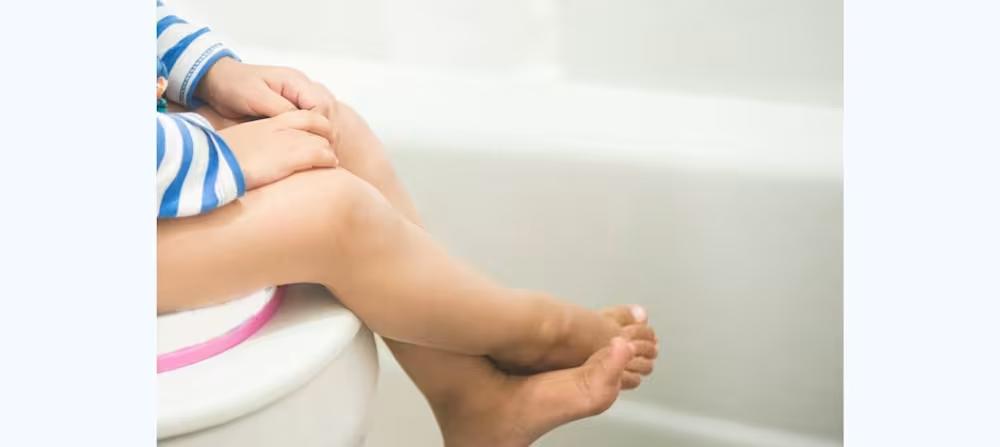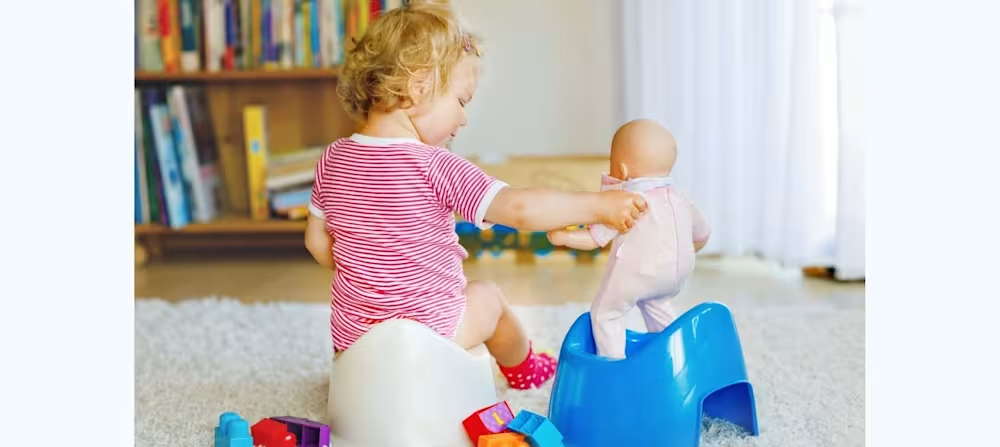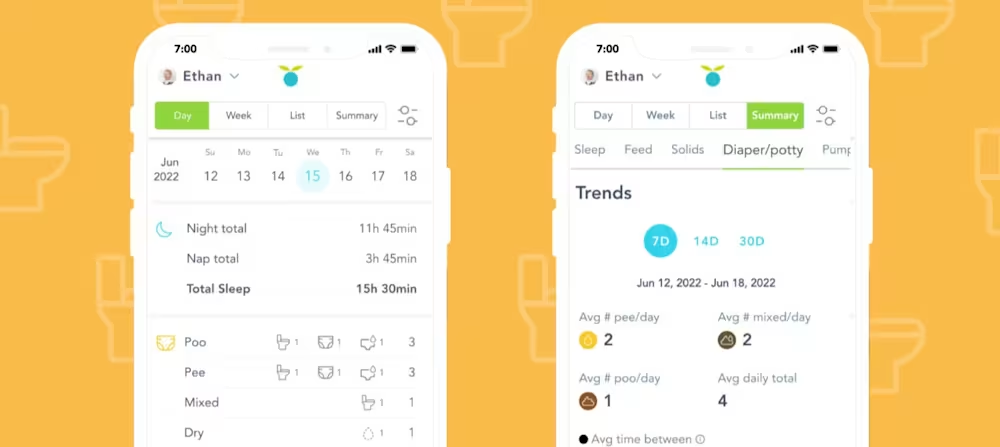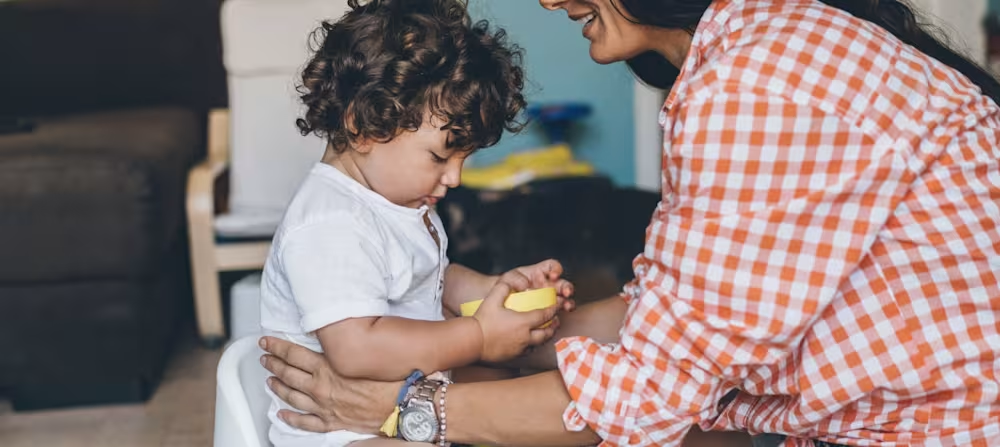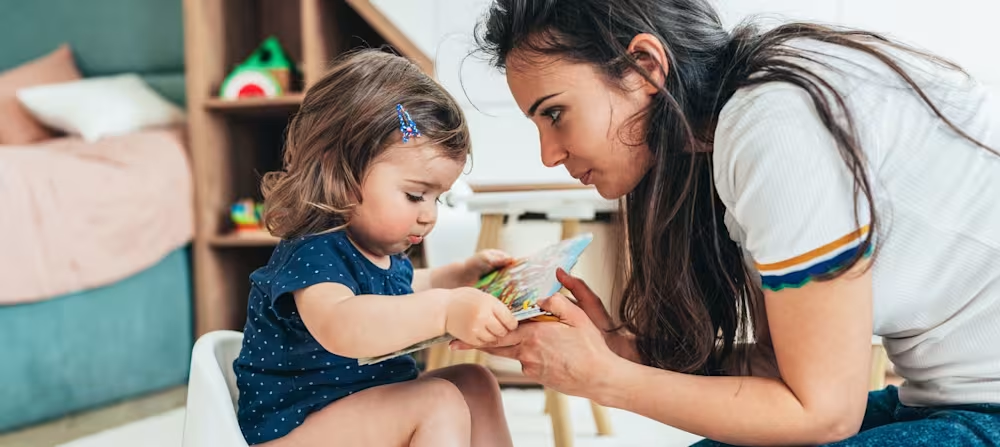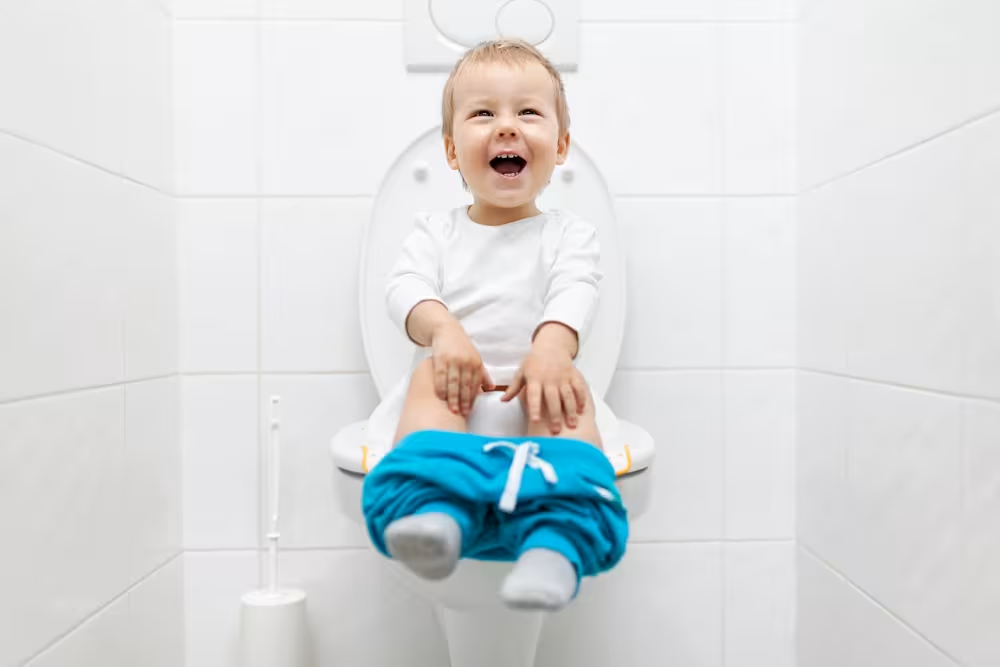10 signs your toddler is ready to start potty training
Updated Dec 30, 2025

We hear it all the time — every child is different. There’s certainly no exception when it comes to readiness!
From an age standpoint, research [] shows that the best time to introduce potty training is around a child’s second birthday. This is typically when children are young enough to be willing to learn this new skill without power struggles but old enough for their brain and body signals to be able to connect so that they can know and understand what’s happening in their body.
Editor's note
For those of you with littles that are older than 2 — don’t worry! There are a lot of factors that go into the ideal timing for potty training, and, believe it or not, age falls pretty low on that list.
Are you both ready?
Here are some questions you can ask yourself to determine if it’s the right time for you to start — or if you might want to put off potty training for a while:
Are there any other major changes that may be taking place that would cause my child stress? (Think new sibling, moving to a new house, going through a divorce, etc.)
Do I feel ready to commit to this process as my child’s caregiver and coach?
Am I a busy working parent who has little or no time to dedicate to the process right now?
Does daycare have certain requirements that may affect when we start?
Is my kiddo showing any signs of readiness?
Not every child always shows classic readiness signs, but there are some surefire ways to know if your little one is almost ready to ditch those diapers. Here are 10 of them.
Developmental signs
Obviously, it's difficult to potty train a child who doesn't understand what the potty is or can't sit on one. In other words, your child needs to be developmentally ready and mature enough to use the toilet — and here are some signs that they are:
1. Your child can communicate.
Junior doesn’t necessarily need to have words just yet, but we do want them to be able to communicate their basic needs in some way (gestures, sign language, visual supports, etc.). It wouldn’t be fair to expect them to use the potty if they can’t communicate their need to go!
2. Your child has the ability to understand and follow basic directions.
We also need their receptive language, or understanding, to be established before starting potty training. A good way to gauge this is if your child is able to understand and follow a simple one or two-step direction. For example, does your toddler correctly respond to, “Can you pick up the blocks and put them in the basket?” If they are capable of this, then potty training could be in your near future.
3. Your child mimics the actions of adults.
Most kids go through a phase of wanting to do the things you’re doing. They may stand beside you and pretend to wash dishes, cook, type on the computer, etc. This is a great sign of readiness — because after all, what’s another thing adults do? Use the potty! You can use these behaviors to your advantage.
4. Your child has an eagerness to please others.
If you notice your tot trying to be helpful, or if they’re always looking to you for praise or recognition, this could also be a sign of potty readiness. (Also: Enjoy this stage!) If your child possesses this trait, you’ll be less likely to need tangible rewards during potty training and can instead focus on building their intrinsic (internal) motivation.

5. Your child possesses well-established gross motor skills.
Before starting potty training, it’s important for your child to have a good grasp on things like sitting, standing, and walking. This is mainly from a safety standpoint: We want them to be able to safely use the potty on their own without worrying about falls or tipping over. Fine motor skills, which are required for dressing/undressing, can be practiced and developed later.
Potty specific signs
When it comes to potty training readiness, some signs are definitely specific to the toilet and the physiological nature of using it. They include the following:
6. Your child has a general interest in the bathroom and toilet.
It’s safe to say that most little ones tend to go through a phase of following you everywhere, including into the bathroom! Oftentimes, they’ll also start to show some curiosity about what actually takes place in there. You may notice them wanting to flush the toilet, play with toilet paper, or wash their hands beside you at the sink. You can build on this curiosity by modeling and talking through those behaviors.
7. They’re staying dry for longer periods of time throughout the day.
This is one of the most important signs to indicate that your child is biologically capable of potty training. If they’re able to consolidate their pee for an hour or more and you’re noticing less frequent diaper changes are needed, along with somewhat predictable poop patterns, this is a great sign of potty readiness.
8. They’re waking up dry from naps or in the morning.
Many children won’t start staying dry until long after you’ve begun the potty training process, but you may notice them starting to stay dry through naps. If you notice dry diapers when your kiddo wakes up, that is an excellent time to start thinking about potty training.
9. Your child is asking for a diaper change.
Sometimes kids will start to feel uncomfortable with a wet or soiled diaper, and they might even alert you that it needs changing. This is a good sign of body awareness, and you can use this discomfort as encouragement for them to use the potty.
10. Your child is hiding to poop.
This is one of the top signs that your child is ready to use the potty. Why? Because it shows that they know they need to go before they actually do, which is a key step in the potty learning process. Therefore, instead of feeling the urge and going under the dining room table or behind the couch, they can feel the urge and go sit on the potty.
Signs your child is not ready for potty training
Sign #1 Your child is afraid of or resistant to the toilet or potty.
This is the first sign that your child isn’t ready emotionally for toilet training. If your child will not even go near the toilet, it’s going to be pretty unfair to expect them to use it. You’ll need to gradually get them comfortable with being near the potty without putting pressure on them to sit on it themselves at first. This might look like a stuffed animal sitting on it, or them sitting on your lap while you sit on the toilet, being in the same room while the toilet flushes, etc.
Sign #2 Your child is not able to keep their diaper dry for an hour or more.
This is a sign that your child isn’t quite there yet from a physiological standpoint. The muscles needed for proper waste elimination likely need to mature a bit more before potty training can begin.
Sign #3 Your child has no awareness of accidents when they occur.
If your child has an accident or bowel movement and continues on with whatever they were doing without missing a beat, then they might not have the awareness needed to master potty training just yet.
Sign #4 Your child is not having regular bowel movements.
If your child is not pooping on a regular basis (ideally at least every other day) without pain or discomfort, then it is important to get constipation corrected before the potty training process begins. You’ll want your child to be pooping regularly and comfortably for at least 30 days before removing diapers.
Sign #5 Your child withholds pee and poop when they aren’t in diapers.
Some children exhibit withholding behaviors when diapers are removed, even to the point of severe discomfort. Withholding can lead to medical problems such as constipation or UTIs. If your child falls into a withholding loop, it’s possible they aren’t quite ready emotionally to be without diapers just yet.
Sign #6 You have attempted potty training but have not seen any measurable improvement within five days.
If you’ve given it a solid effort and remained consistent with toilet training for five days or more but nothing seems to be getting better, then most likely it is time to press pause and revisit the concept again later. Sometimes taking a break and removing all the pressure can help things start clicking into place for your child.
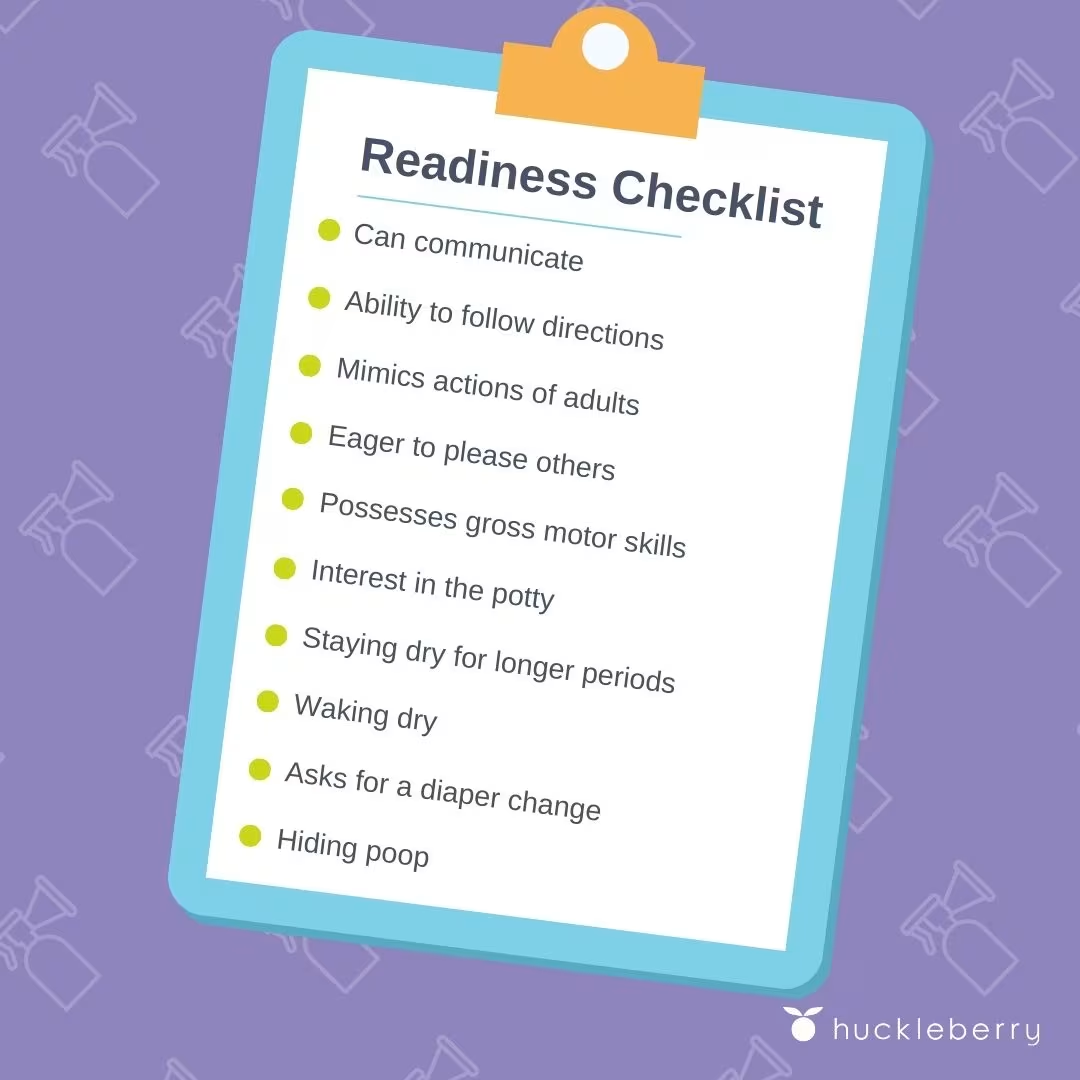
A final word
As we said, every child is different — so there is no “normal.” Also, it’s important to note that some children never exhibit any signs. If that’s the case, don’t worry! Follow your instincts on if your child is capable. Sometimes they’re just waiting for you to take the lead and teach them this new lifelong skill!
Ready to start potty training FAQ
Share article:
Note: The content on this site is for informational purposes only and should not replace medical advice from your doctor, pediatrician, or medical professional. If you have questions or concerns, you should contact a medical professional.
1 Sources
Share article:
